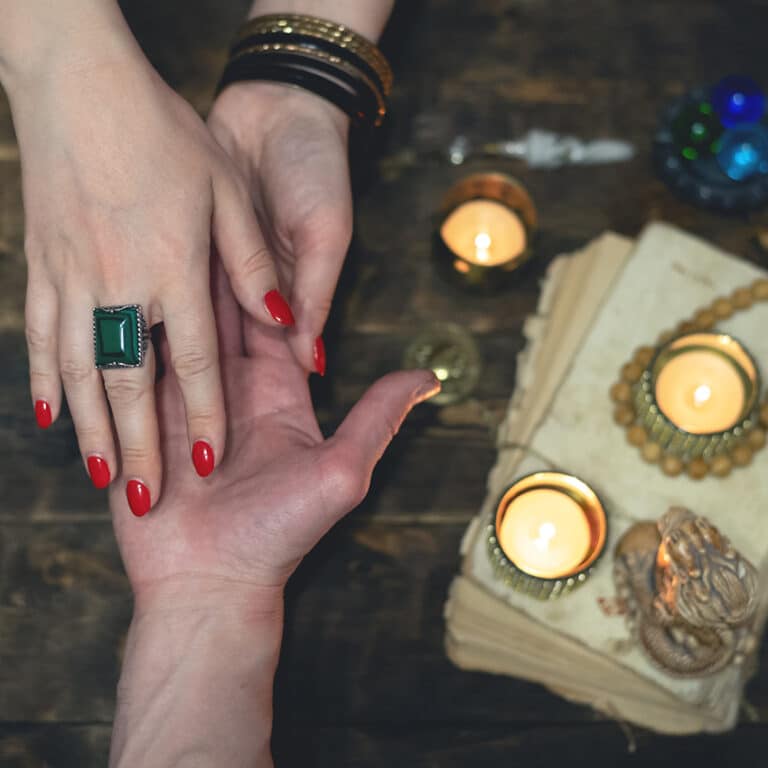Palmistry is a largely misunderstood art; it is an observation of the predictable lines and patterns on the hand that display characteristics of a person’s personality.
The Renaissance era imbued many of the topics related to the healing arts as heretical and established a culture of fear around any topics linked to psychic phenomena to promote the concept of a sole deity that held supreme power over lesser subjects, humans with a need for redemption. This mechanism of washing or erasing the actual truth from the culture created massive misconceptions about its purpose and the process by which someone reads a palm. Instead of being a help,
Let’s debunk the most common myths about this simple and revealing practice so we can use it to
Myth #1: Only Your Dominant Hand Should Be Read
In the practice of palmistry, also known as chiromancy, one of the first questions that can come up is which hand to read because you
There are two main myths about which hand to use:
- The first is that women’s left palm should
be read while men’s left hand shouldbe read . Thisis largely based on the idea that feminine energy is on the left side of the body and masculine energy is on the right which is true but that doesn’t affect which palm needs tobe read . - The second misconception is that the hand you write with should
be read, which is just not true. According toAstrohub , the consensus among professionals is that the right-hand correlates to the logic side of the brain and so that hand reveals thought patterns which makes it a good hand to read.
Myth #2: Your Future is Predetermined
While some people think of palmistry
The hands reveal the tendencies of a person’s personality, not their predetermined fate. There is always a projection of the future that can
Myth #3: A Palmist Can Tell When & How You Die
Many people are afraid of palmistry because they think it reveals how or when they will die. But that information is just not something that palmistry can reveal. The life line is not about the length of your life, but about your energy.
- If you have a deep groove, it can mean you’re very passionate and have strong emotions while a very faint groove can mean that you are lethargic or more reserved in an emotional sense.
- A short line can mean you
tend to start and stop things instead of sticking with them.
The placement of the line is also significant and helps reveal the way you interact with others but none of it says when you will kick the bucket folks so don’t fall into the trap of believing someone who says it does. When you really understand the
, it can reveal a lot about what roles you can excel in and which are just not naturally suited to your energy.
Myth #4: Palmists Have a Supernatural Gift
Have you ever felt in awe of someone who has a spiritual gift? What you don’t see are the hours and hours of studying and practicing which they have done.
Both clairvoyance and palmistry are skills you can learn and develop just as much as learning how to fix the plumbing in a house. While some pick it up easier than others, there is no magical gift to palmistry.
This is a well-documented and observed study that is much more scientific than magical. People who have an eye for details will do well in this practice because it requires a lot of patience to learn the many types of lines, line breaks, mounts, hand shapes, finger shapes, and other indicators of human behavior that have
Myth #5: Hand Lines Don’t Change
This is a point of contention for those new to palmistry
This comes back to the original purpose of
Someone who was
Myth #6: Hand Lines are the Only Thing a Palmist Reads
One more common misconception is that palmistry is only about the hand’s lines. The hands
Palmistry is not something that can
Read this next: Palmistry: Hand & Finger Shapes
Closing Thoughts…
Have you tried
A fun way to see the accuracy of palmistry is to compare it with other systems that have been able
Related Article: Deeper Into Palmistry: All About The Mounts
